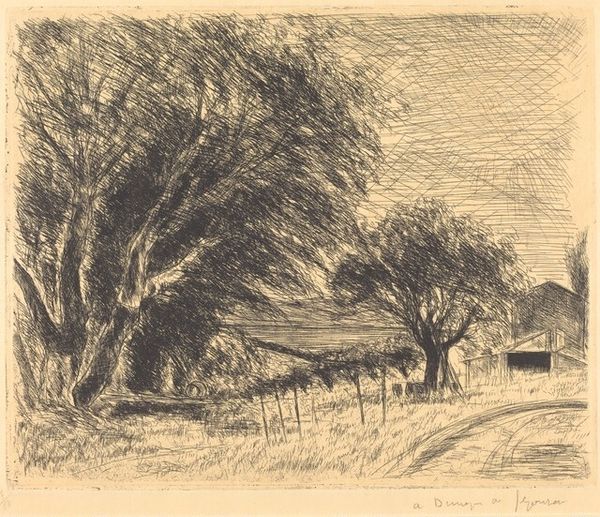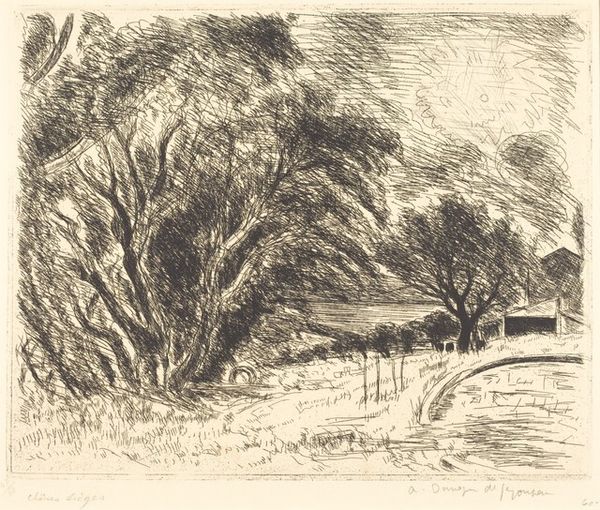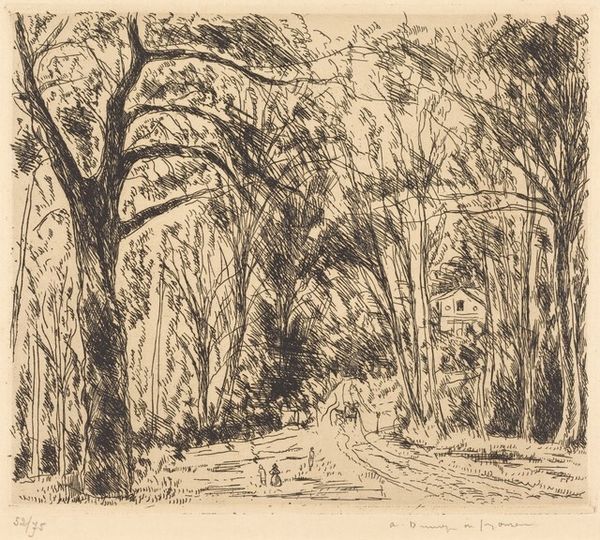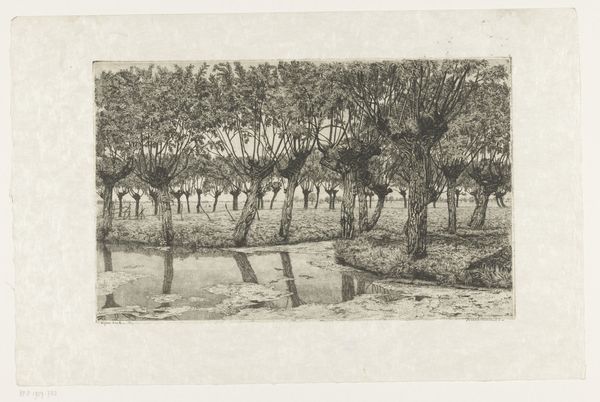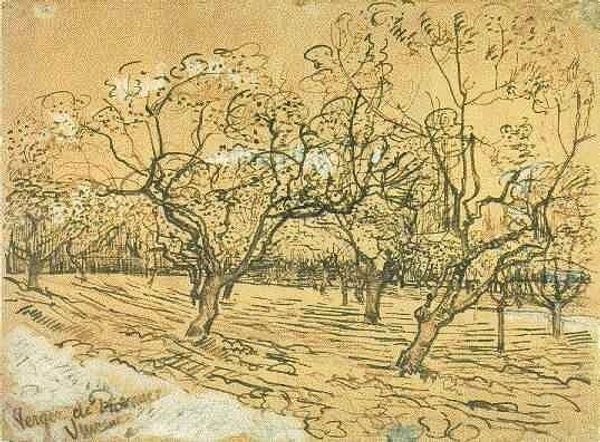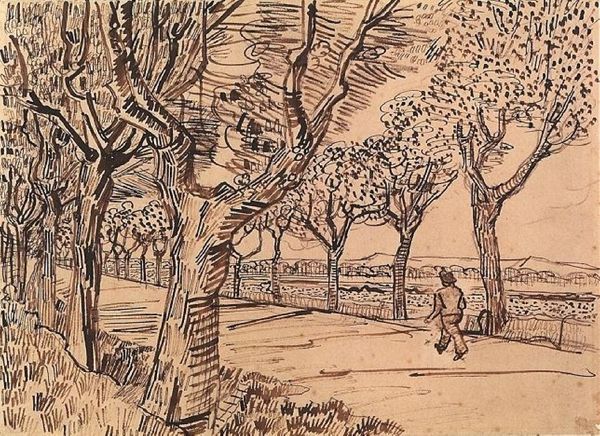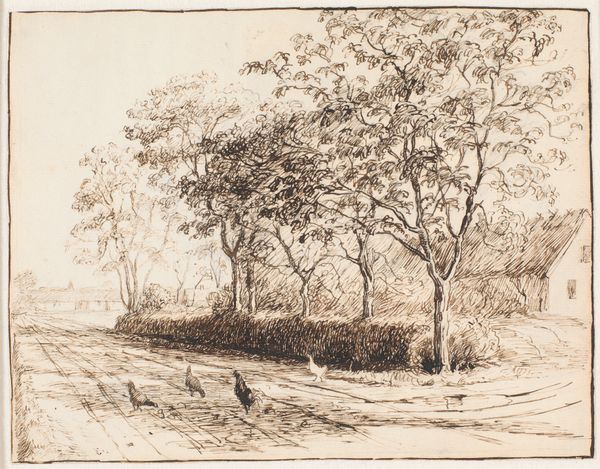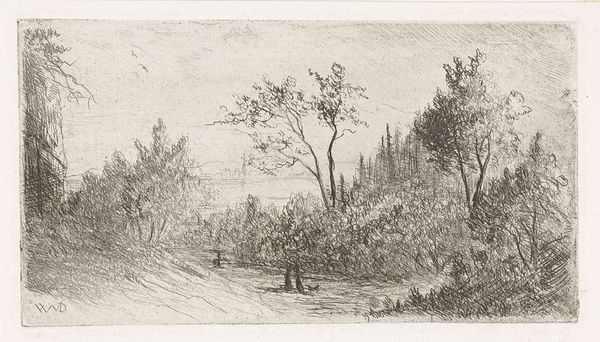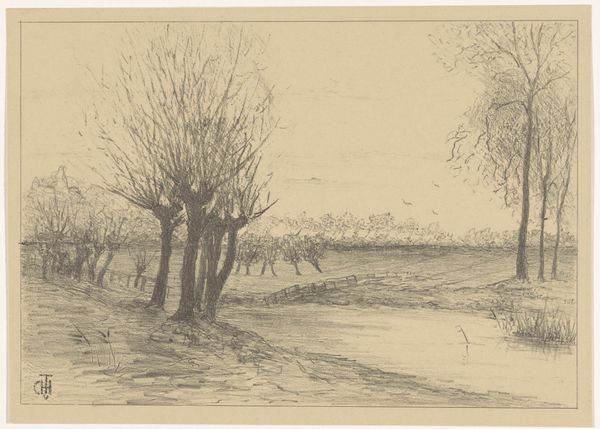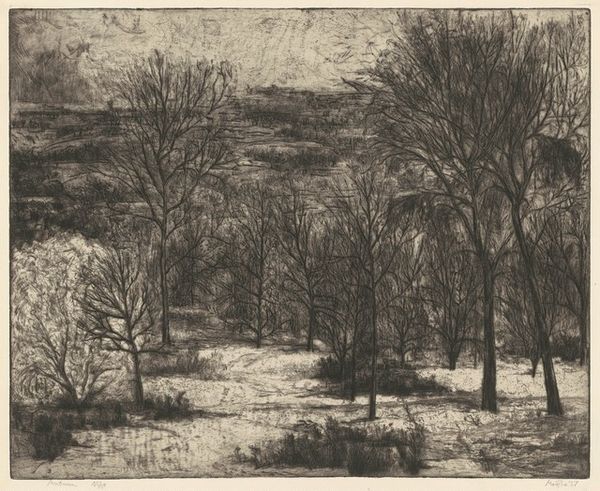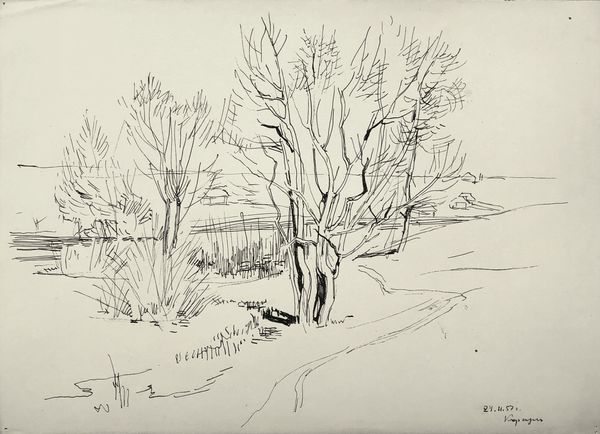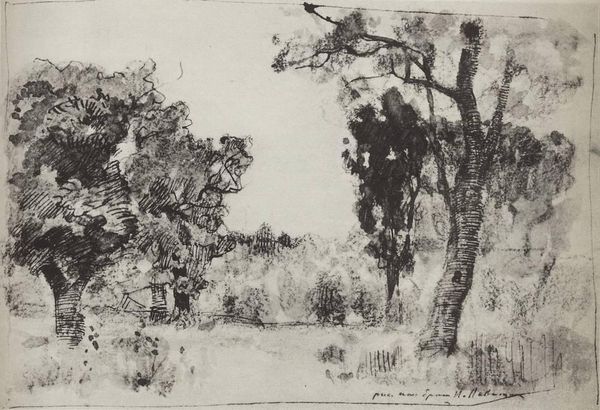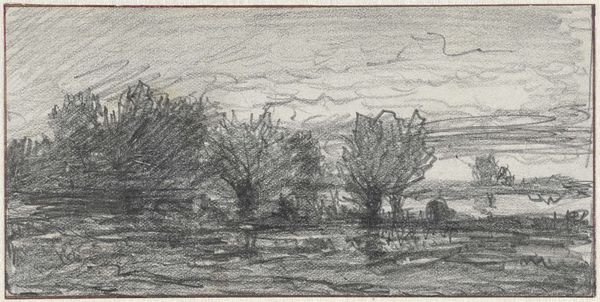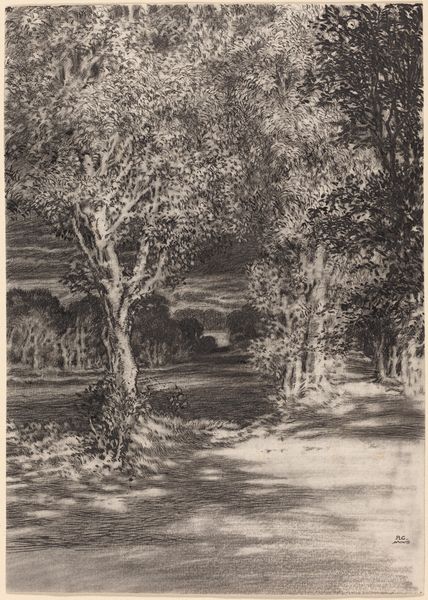
drawing, paper, ink
#
tree
#
drawing
#
garden
#
impressionism
#
pencil sketch
#
landscape
#
paper
#
ink
#
plant
#
park
Copyright: Public domain
Curator: Sobering, wouldn't you say? A bit desolate. Editor: Indeed. We’re looking at Vincent van Gogh’s "The Vicarage Garden," a work rendered in ink and pencil on paper from 1884. The bare trees immediately establish a somber, almost gothic mood. Curator: Absolutely. Van Gogh was living with his parents in Nuenen at this time, where his father served as a vicar. This drawing offers a glimpse into their domestic life. But there is an undeniable tension evident if you know of the strained relations with his father, as well as Vincent's separation from the art world in Paris. He hadn't yet achieved any form of recognition. Editor: It's fascinating how those tensions manifest visually. Look at the linework, the dense cross-hatching which creates depth, but also a sense of confinement. It isn't the light and airy impressionism of his later work, but quite constrained with these thin and sharp lines. Curator: That meticulous style could be read as his attempt to connect with the Dutch Masters tradition. Think about Rembrandt's etchings—that detailed realism and moral seriousness. Van Gogh was attempting to establish himself within a lineage. Editor: Perhaps. But those gnarly, reaching branches have a decidedly expressive quality too. They almost seem to claw at the sky, imbuing the scene with latent emotion. Note how van Gogh doesn't quite allow you into the pictorial space, the composition keeps one fenced off through his placement of plants and line work, which in turn suggests his mindset and isolation from society at this stage of life. Curator: That emotional element definitely amplifies when knowing the social conditions that surrounded Van Gogh's personal and artistic life. It really brings out a feeling of personal struggle that transcends a mere landscape depiction. The starkness, of course, is the dominant and immediate impression for anyone who views this for the first time. Editor: Precisely. What initially appeared desolate, now has so many different contexts layering into the experience, from material form to social conditions of artistic expression and purpose. Thank you. Curator: It’s interesting how these details highlight an internal state. Food for thought about how we internalize art’s emotional expression.
Comments
No comments
Be the first to comment and join the conversation on the ultimate creative platform.
